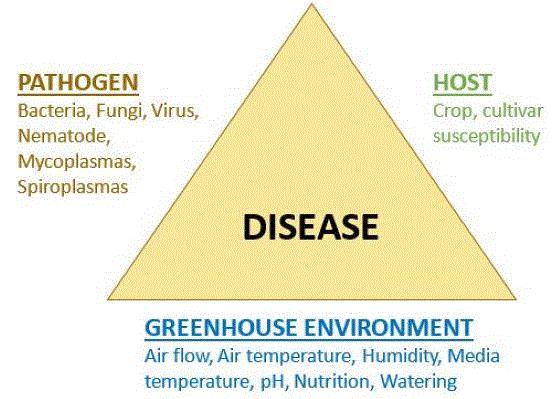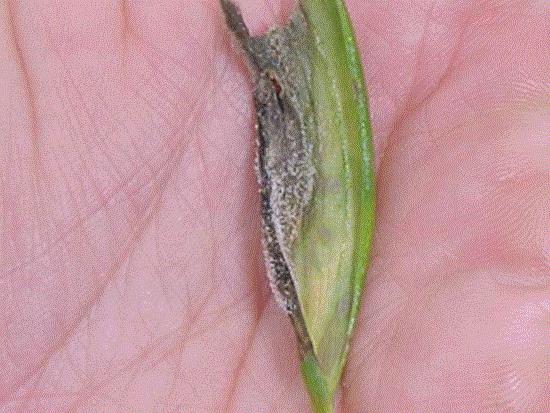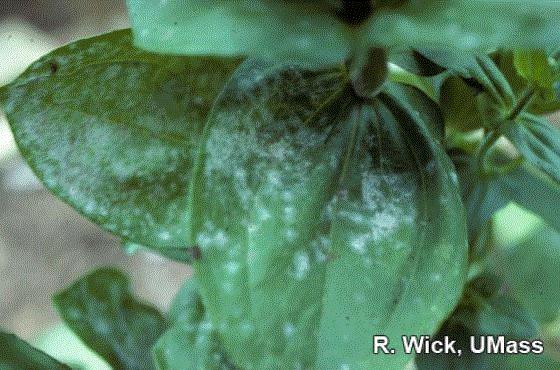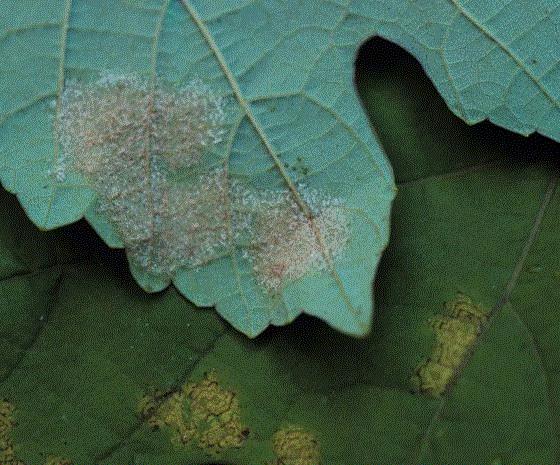December Farm Update

Merry Christmas from my family to yours.
Merry Christmas and happy holidays, dear friends!
We learned a lot about timing Christmas flowers this month. I need to sit down and take quality notes so we can refine our Christmas program for 2025. The snapdragons and stock were a huge hit with our florists, although some of our other planned crops, such as anemone, ranunculus and lisianthus, left more to be desired. But at least the anemone and ranunculus wll be spectacular for late January and Valentine’s Day sales!
The more seasons I get under my belt, the more I realize that it takes at least five tries to get a handle on a new crop. We’ve grown lisianthus, anemone and ranunculus for years, but this was our first time trying to hit Christmas. In four more years I’ll have it down to a science ... but in the meantime, I enjoy the challenge and I try to embrace it.
This is one of many challenges we are tackling this winter. We bought some gently used greenhouse equipment to help us launch our new lily program next spring. Rich and the Forget Me Not Crew have a lot of tinkering to do to get our transplanting line and bale-breaking system dialed in. May will be here before we all know it!
But for the next week, I’m just trying to be present and enjoy the moment. The work will be there when we all get back from the holidays this week and next. Tater and I wish you and your family the most magical holiday season. I hope you take some time to relax, unwind and recalibrate. I cherish this time of year, it reminds me to focus on the most important things. Flower farming is a marathon, especially if you extend the season with greenhouses and high tunnels, and in the thick of the season it’s easy to get focused on the daily tasks at hand. Sometimes I forget that in the end what truly matters is community, family and friends.
So THANK YOU for letting us into your inbox each month. We hope our newsletter provides some useful tips and tricks that help make your farm more profitable.

Managing Foliar Diseases in Cut Flowers

Disease triangle illustration by Romy Alavoine
Dr. Mary Hausbeck is one of my favorite professors on Michigan State’s campus. She’s a distinguished plant pathologist and studies diseases that plague a wide range of crops, including cut flowers. Dr. Hausbeck strives to reduce Michigan growers’ reliance on fungicides through novel and integrated management strategies. She gave a talk at GLE about managing diseases in cut flower production systems. Below are some takeaways from her talk.

Botrytis on lily foliage. Photo by UMass
Plant disease boils down to the disease triangle. You need a susceptible host, environmental conditions conducive to the pathogen and, of course, the pathogen. Growers can implement sanitation practices and planting strategies to help make conditions less attractive to pathogens. A grower must know if a pathogen is a fungus, bacteria or virus. This dictates what you can apply to save the crops, it will also help you streamline your remediation strategy. If you know how a pathogen is introduced, how it spreads, and how it can survive, you can reduce disease outbreaks before they start. Below are some popular pathogens that plague cut flower operations and how to manage them:
Botrytis blight, aka gray mold, lives on live and dead tissue. It loves to infect flowers, since they are high in sugar. Spores thrive in high humidity and wet conditions. If foliage and flowers are wet for longer than six hours, infection is likely. Botrytis does not need a specific host and can be a problem throughout production. If you increase spacing between plants and remove dead/decaying flowers and foliage, this will help tremendously. In the field, you should orient planting beds to take advantage of the prevailing winds to maximize air flow. When storing flowers in the cooler, store in as low a temperature as the crop will tolerate so that disease does not proliferate post-harvest.
Even if you implement the above strategies, there may be instances in the growing season in which you will need to intervene with fungicides, but hopefully they will be less frequent.

Powdery mildew on zinnia. Photo by UMass
Powdery mildew, on the other hand, is host-specific and only lives on live tissue. It is an obligate parasite, meaning it will not colonize dead tissue. When scouting for powdery mildew, be sure to look for white colonies on the foliage. If you apply a fungicide and the colonies look more opaque/translucent, your application was effective. If the colonies are still white, then you need to do something different. Dr. Hausbeck compares powdery mildew to cutting grass: Once powdery mildew is on a crop, you will need to keep managing the disease. The plants will look great after a fungicide application but the spores will come back. The pathogen infects the leaf surface and creates a nutrition sack below the leaf epidermis. This sack feeds the colonies on the leaf surface. You need to use a fungicide that is locally systemic to kill the sack below the leaf surface. Powdery mildew can develop resistance to fungicides very quickly. Be sure to rotate FRAC codes if you are using conventional fungicides to help combat this. Cultivar selection is a critical tool, and you should select resistant varieties whenever possible. Scout often and dispose of infected plants promptly. You may need to use fungicides preventatively when conditions favor disease.

Image of downy mildew on the underside of a leaf. Photo by Penn State Extension
Downy mildew is similar to powdery mildew in that it is a obligate parasite. Downy mildew can be a problem for many of our favorite crops, such as anemone, larkspur, pansies, stock, and snapdragons, to name a few. Downy mildew is also host-specific, meaning the strain that infects snapdragons will not infect roses, etc. Downy mildew outbreaks can occur overnight. Weekly scouting and vigilance is key. According to this
ARTICLE from Dr. Hausbeck and
GrowerTalks, "Downy mildew sporangia form in the dark during the evening and early morning hours when the environment is humid and wet. As the sun rises and the environment begins to dry, the mature sporangia are released into the air and eventually settle on new plants. Even a small outbreak of one or two diseased plants can go undetected, yet this can enable the pathogen to spread and increase rapidly." When scouting for downy mildew, be sure to check under the leaves for fuzzy fungal colonies. Botrytis symptoms can look similar, although botrytis is not confined to the underside of leaves. Rouge diseased plants and increase ventilation to reduce the relative humidity this will help limit further infection.
The key to avoiding these foliar pathogens is prevention. This can be achieved by monitoring the humidity and ventilation in your greenhouse and applying preventative fungicides when conditions are conducive to infection. Dr. Hausbeck releases a greenhouse disease management
GUIDE each year, which is a valuable tool. And our friends at
GrowerTalks partner with BASF to create a insecticide, miticide and fungicide
GUIDE each year as well. Both are worth bookmarking.

Considerations for Starting a U-Pick Flower Program
I had the pleasure recently of listening to Michelle Brosius, co-owner of Green Things Farm Collective, give a talk on their successes and challenges in running a U-Pick program on their farm in Ann Arbor, Michigan. Green Things Farm grows six acres of vegetables, and a quarter acre of flowers for their U-Pick. Flowers are a small enterprise on their farm, but it is an incredibly profitable one because of the minimal staffing required to run their U-Pick.
This past season Green Things had a two-hundred-member, nine-week CSA. The CSA shares were $130 each and members can come out to the farm each week for nine weeks to pick a 25-stem bouquet.
If you are considering starting a U-Pick or improving operations, hopefully you will find the following tips helpful.
Michelle and her team run the CSA on the honor system; they trust members to only come to the farm once a week. The farm provides rubber bands, pruners and buckets for members to use for picking. They put limits on some flowers; for instance, popular focal flowers such as dahlias are limited to three stems per visit.
Michelle and her team created a video explaining the U-Pick process, instructing visitors where to park, directions to the field and where the tools are for picking, as well as how to harvest flowers. This work on the front end makes their U-Pick practically self-service, which makes it more profitable. If visitors have questions, there are employees working in their on-farm store as well as in their production areas, but they do not allocate staff to work the U-Pick.
Michelle plants mostly cut-and-come-again crops such as zinnia, strawflower and statice. Some of Michelle’s early spring favorites are nigella, larkspur and bachelor buttons, since they are low-input, productive crops. Dahlias are always a highlight for guests in the fall. They plant two successions of their heat-loving annuals to make sure they look fresh for guests each week.
Michelle advises choosing varieties in an autumnal color palette for your late-season succession. Folks want seasonally relevant colors and textures. Michelle and her crew double crop the ¼ acre, meaning when one succession is finished, they immediately have another crop to plant in its place.
I asked her about their insurance policy to protect their farm from folks tripping, falling, or worse—cutting themselves. I didn’t get a clear answer, but I implore you to discuss this ad nauseum with your insurance company. Always be sure to protect yourself and your farm!
But don’t let that discourage you from trying U-Pick, especially if you can train and educate your guests to safely manage themselves.

Level Up Your Light Game (from Tech on Demand)
Bill Calkins' Tech on Demand
newsletter is one of my favorite emails in my inbox each week. Honestly, every discerning grower should subscribe! Below are some helpful tips from regular contributor Nick Flax, a technical services expert at Ball, on how to maximize your light during winter production.
PROBLEM: Plants cannot grow and develop properly if one of the five factors of plant growth (water, light, gas exchange, mineral nutrients, proper temperatures) is absent or lacking. In early spring, it is light that is often the most limiting factor for many of you.

NICK’S TIP: Here are a few basic ways to think about the importance of light in bedding plant production—particularly in early spring:
• Plants accumulate light energy in the photosynthetically active radiation (PAR) spectrum to grow. This includes light from the blue to red range (about 400 to 700 nm, respectively).
• Think of PAR accumulation in plants like a “rain gauge for light energy.” The harder it rains and the longer it rains, the more total inches of water a rain gauge collects. In the same way, the more intense light levels are in the greenhouse and the longer the daylength is, the more light energy plants can soak up to drive additional growth.
• The more light energy your crops can absorb, the more nodes they can form. More nodes mean more places for axillary shoots and/or flower buds to develop. This results in larger, bushier plants and more color on crops at finish.
Maximize Light Whenever Possible
• In early spring, your geography has everything to do with maximum potential light intensity and daylength. In the northern hemisphere, the further north you are, the further you are from the sun and the shorter your daylength is in winter and early spring (due to Earth’s axial tilt). This means sunlight is less intense and your plants have a shorter window in which to soak up PAR energy during the day. Light intensity increases and days get longer as spring progresses, but plants need optimal light now to grow vigorously (and remain compact and aesthetically pleasing.)
• The addition of high-intensity discharge (HID) lights is a logical solution to address low light. Fixtures like LEDs (light-emitting diodes) and HPS (high-pressure sodium) lamps are commonly used in the greenhouse to supplement natural light levels. However, buying and installing these fixtures isn’t cheap, so it’s not always economically feasible to add lights, so consider these additional methods of maximizing light levels in your greenhouses.
• Glazing material age: If your greenhouse is covered with polyethylene film or rigid polycarbonate, the age of your glazing has a big impact on light levels at crop height. As the sun degrades plastics, they darken in color and/or become somewhat opaque, which reflects (or absorbs) light energy from the sun and keeps it from reaching your crops. Follow manufacturer recommendations on when you should replace your glazing material and avoid the temptation to “get another couple of years out of it” if your spring crops have tended to get leggier or grow more slowly in recent years.
• Glazing material cleanliness: Dirt, dust and algae on your roof and sidewalls all block light. Wash both the inside and outside of your greenhouse glazing and sidewalls each year. Pressure-washing with clear water is often sufficient but be careful not to damage your glazing material. Also, if you include a detergent of some kind, check your glazing manufacturer’s specifications and care instructions to ensure it is safe to use. Many companies offer specific cleaning recommendations, so reach out to your suppliers when in doubt.
• Change your shading strategy: Many of you apply a liquid shading compound to the outside of your roofs or sidewalls in summertime to keep the greenhouse cooler and block excess light. However, if you do not fully remove this before winter, shading compounds can accumulate and block the light your crops need in the early season. While the old white latex paint dilution works and is still used by many to “whitewash” their structures, it can sometimes be hard to remove completely. Consider use of products like ReduSol that have “release” agents to enable quick and easy removal of the shading compound when you want to take it off.
• Manage crop spacing: If weather and glazing conditions cannot be remedied right now, consider how closely your plants are spaced on the bench or floor. The tendency to stretch is often a response to low light intensity, so adjust the space between your crops to help light penetrate lower into the canopy and reduce competition for light among plants that are next to each other.
• Wait for as long as possible before you hang your basket crops above plants on the bench or floor. Until natural light intensity and daylength increase, placement of crops above your main growing surfaces will only reduce light levels at crop height and diminish their ability to accumulate light energy.

Marketing Money Available for Us Cut Flower Farmers!

Alright friends, you want to pay close attention to this: USDA has a special pool of money for specialty crop growers to help offset higher marketing costs. This includes cut flowers and nursery stock! Payouts are based on your gross revenue for either 2023 or 2024. According to the USDA website, eligible producers must comply with the following:
- Have an average adjusted gross income (AGI) of less than $900,000 for tax years 2021, 2022, and 2023, unless the producer or legal entity’s average adjusted gross farm income is at least 75 percent of their average AGI;
- Be in the business of producing a specialty crop at the time of application and be entitled to an ownership share and share in the risk of producing a specialty crop that will be sold in calendar year 2025;
- Be a U.S. citizen, resident alien, partnership, corporation, limited liability company, or other organizational structure organized under state law; Indian Tribe or Tribal Organization; or a foreign person or foreign entity who meets certain eligibility requirements;
- Comply with the provisions of the “Highly Erodible Land and Wetland Conservation” regulations, often called the conservation compliance provisions; and
- Not have a controlled substance violation.
The Marketing Assistance for Specialty Crops (MASC) application is due January 8, so don't delay, be sure to talk to your local
Farm Service Agency office.
If you already have information on file with them you only need to fill out two forms. If you are a new client you will have more paperwork to do. But don’t let that scare you, because this funding is meant to help farms like yours. Be sure to capitalize on this.
For more information, you can find the press release
HERE.

Enthusiastically!
Lindsay Daschner (and Tater)
Editor-at-Large—Bloom Beat
Owner—Forget-Me-Not Farms
This email was received by 6,274 of your fellow fresh-cut flower growers!
If you're interested in advertising in Bloom Beat, contact Kim Brown and she will hook you up!